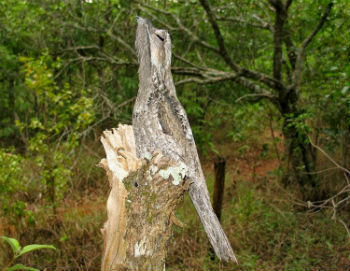Mimicry is an adaptive characteristic of animals or plants to imitate another organism to gain advantage.
Among the major goals of mimicry is protection from predators. There are also other functions, such as taking advantage of mating, feeding or confusing the prey.
The imitating organism uses strategies such as pattern-patterning of the colors, odor, sound emission, and physical characteristics of the model organism.
Insects are examples of organisms that make the most use of mimicry. For adaptations, they use chemical, physical and behavioral characteristics.
Natural selection is the process responsible for making species mimetic.
Types and Examples
defensive mimicry
There are two forms of defensive mimicry: the Batesian and the Mullerian.
Batesian mimicry

The true coral snake on the left and the false on the right. False coral deceives its enemies by looking like the poisonous species
Batesian mimicry is considered the most common type in nature. The first studies on the phenomenon were published by the English naturalist Henry Walter Bates (1825-1892), in 1863.
Bates observed the behavior of insects in the Amazon and noticed the physical adaptations of butterflies to ensure protection from predators.
In this kind of mimicry, the imitator tries to deceive the predator by using colors and features that cause repulsion.
Colors and shape are warning signs for the predator to move away because the organism is unpalatable or undesirable. This strategy is called warning color or aposematism.
The predator stays away because the organism uses strong colors and specific shapes befitting its toxicity potential.
The same colors and shapes are copied by the imitating agent. Thus, the predator turns away because he believes that, like the model, the imitator contains poisonous substances, stings, thorns or itchy hairs.
Mullerian mimicry

Unpalatable butterflies share the same color pattern.
The use of substances repugnant to the predator was also described by scientist Johann Friedrich Theodor Müller (1822-1897). It is called Mullerian mimicry, common in abundant species such as insects.
Mullerian mimicry occurs when two or more unpalatable species adopt a single warning color pattern. In this way, they manage to avoid a greater number of natural enemies.
aggressive mimicry
Aggressive mimicry is used to facilitate predator attack, which disguises itself as prey or reproduces harmless situations.
Among the examples are spiders Myrmarachne, which change their physical characteristics to become similar to ants, their prey.
 This spider mimics an ant. The case is an aggressive and Batesian mimicry.
This spider mimics an ant. The case is an aggressive and Batesian mimicry.
reproductive mimicry
Reproductive mimicry is also called behavioral mimicry. It is used to win the competition at playtime.
Among the examples is the male wasp, which starts to imitate the female's behavior to deceive and drive away other males.
However, reproductive mimicry is not an exclusive characteristic of animals, plants can also take advantage of mimicry. An example is the orchid Ophrys apifera, which mimics the female bee.
 the orchid Ophrys apifera has flowers similar to female bees
the orchid Ophrys apifera has flowers similar to female bees
This plant also releases a bee-like odor and attracts the male. So the drone copulates with the flower because it believes it to be the bee.
In action, the body is covered with pollen, which will be spread to other plants, helping the reproduction of the orchid.
Learn more about the Insects.
Mimicry and Camouflage
Confusion between mimicry and camouflage. Understand the difference between the two processes.
As we have seen, in mimicry beings resemble each other to gain some advantage.
In the case of camouflage, the strategies serve to make it difficult for the predator to approach or facilitate the arrival to the prey. In camouflage, individuals present similarities with the environment in which they find themselves.
Furthermore, in camouflage no chemical means are used.
Check out some camouflage examples:
 The owl is similar in color to the trunk of the tree.
The owl is similar in color to the trunk of the tree.
 The Urutau is a bird that stays paralyzed for hours on tree trunks. Thus, it goes unnoticed by its predators.
The Urutau is a bird that stays paralyzed for hours on tree trunks. Thus, it goes unnoticed by its predators.

The stick insect imitates a tree branch
Read too:
- Predatism
- Ecological Relations
- Societies in the Animal Kingdom
- Natural selection


